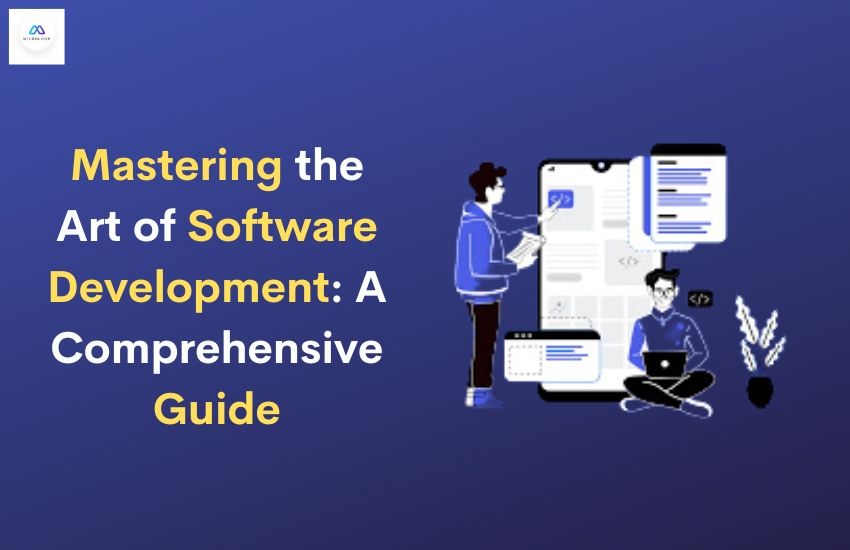
Close


Software development is a broader term where you need to develop system software that manages the computer's internal functions, application software that enables the computer to carry out the task usually carried out by the end-user, and computer programming software that is used to create software applications.
Many big companies choose to outsource the software development process for two reasons: one is the need for more resources and the ability to focus on other important activities that require their attention.
In this blog, we will delve into the basics of software development, the software development process, and trending technologies in IoT.
Let's get started!
Software development is the process of designing, programming, documenting, and testing bugs involved in creating and maintaining applications, frameworks, or software components.
It involves writing and maintaining the source code, which means deciding the concept of the final design of the software.
Software development involves a complicated process to design software or applications that will indirectly meet a particular objective or goal of a business. To understand this process in depth, let's delve further:
In the planning stage, the team engages in discussion to determine the actual requirements. Also, you have to decide the software's design and the programming language that is going to be used. The important factors that need to be considered are:
It's very important to understand the technical requirements of the project. You need to ask questions like:
What sort of data is needed to solve the problem, who is going to use it, and how do you need to integrate it with other tools and APIs?
Accordingly, you need to identify technical requirements, establish testing terms, and decide on the technology part.
Along with requirements, the software design process commences, outlining how the software will function. You can create simple wireframes to show how interactions will work within the software or develop full-fledged prototypes and conduct user testing.
This is done with the ultimate motive of getting feedback from customers and getting to work quickly on changes for your end users.
The programming and coding stage, during which computer programmers write codes in a suitable programming language. After this, programmers conduct trials in order to detect errors and make it bug-free. This step requires you to keep with the development team, as they will ensure how much effort is required to complete the project.
Once the software is fully coded, it should be sent to the testing team for their feedback. While programmers make sure that there are no errors, the testing team's primary role is to cover and check various aspects of the software to make sure that there is optimal functionality.
The stage where there is finally the time to launch your software to all your users. What makes it a successful deployment plan is launching the code into the software and delivering error-free software.
Software development is an ongoing process involving a continuous cycle of finding bugs, requesting new features, adding new features, and asking for one or more different functionality. This is done to fulfill the customer requirements and needs that will ultimately lead to customer satisfaction.
Finally, after the software is installed on a client's system or software, the programmers can run smoothly and keep up with other app updates.
IoT has been a game changer in the industry because it has allowed your everyday objects and devices to be connected through the internet, which will allow them to collect, exchange, and utilize the data.
Software development services allow the interconnectedness of everyday objects and devices through the internet to collect, exchange, and utilize data. A few services include:
The technology helped a lot during the pandemic, enabling doctors to remotely monitor every patient's health condition and track the real-time status of medical equipment, wheelchairs, and oxygen pumps.
It plays a vital role in agriculture, aiding farmers in detecting and optimizing crop yields, reducing resource wastage, and monitoring soil conditions.
The operations of managing the manufacturing process in real-time, optimizing operations and predictive maintenance, ultimately saving time and cost while allowing them to focus on the crucial activities that need their attention.
It is one of the human intelligence in machines, allowing them to perform tasks that require human intelligence. There are various AI applications:
It empowers machines to understand, interpret, and generate human language, making chatbots, and language translation possible.
AI with the help of machine learning enables computers to learn from data and make predictions or take any decision without any explicit programming.
The capability of computers to analyze and interpret visual data such as facial recognition, medical image analysis, and autonomous vehicles.
A world that's visually created through the use of headphones and VR devices. Initially, the technology was popular in gaming, but VR technology has expanded into other fields, including health care, aviation, training, and education.
A system where information is recorded digitally that makes it impossible to change or hack the system.
Each block in the chain contains multiple transactions, and each time, the information added becomes a record across all participant's ledgers.
The sectors where blockchain is applicable include supply chain management, cryptocurrencies, identity verification, and many more, where it is continuously shaping and evolving across industries.
Microloop IT Solution, USA, provides a comprehensive software development guide to all its clients. With a track record of:
We have a variety of software development services, including custom software, enterprise software, and e-commerce software development, all delivered by our expert team that closely works with you to understand the client's requirements.
Consult today to get the best software development services.